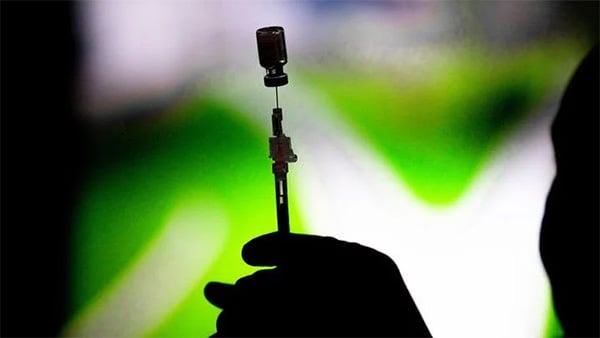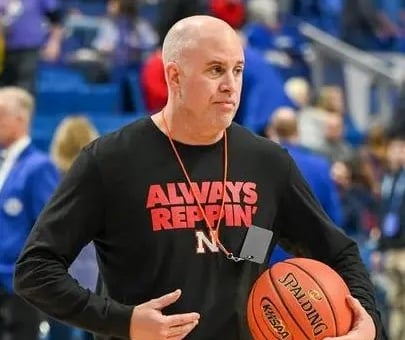A guy cooking up plastic in his kitchen and then pouring it into steel molds in his basement revolutionized fishing for largemouth bass.
The plastic worm, flexible, with a soft, flesh-like texture, traces back to Nick Creme, who created the first plastic worm at his home in Akron, Ohio, in 1949. The rest is history and bass fishing has never been the same.

A machinist by trade, Creme enjoyed fishing in his spare time. Through sheer determination, he would become the consummate entrepreneur, an inventor, and a man with a tackle marketing vision way ahead of his time.
Creme’s goal was an artificial worm that would hang on a hook just like a real one. Since nothing like that existed at the time, he set out to make one. He read up on chemistry and saw promise in the emerging field of plastics, traveling to Cleveland, Ohio to meet with DuPont officials and lab technicians.
With some advice and chemicals in hand he worked with his wife, Cosma, cooking up a mixtures of vinyl, pigments and oils, then pouring them into lifelike molds he’d crafted from steel. Eventually, he got the formula right and produced the worm he envisioned.
After field testing, fishing with the worm rigged the way anglers traditionally rigged real night crawlers, he founded the Creme Lure Company.
His first product was called the Creme Wiggle Worm, but later renamed the Creme Scoundrel Worm, which came rigged with hooks, beads, and a propeller.

In the late 50s, as bass fishing gained popularity in the South with the the construction of many large reservoirs, Creme moved his company to Tyler, Texas, where it remains today. Visit the website at cremelure.com.
Creme was one of the first lure manufacturers to employ field testers, paying anglers to fish with his lures and demonstrate rigging techniques at sporting goods stores and sport shows. His paid anglers included celebrity angler Bill Dance, winner of many professional bass tournaments, who hosted a TV fishing show.
Today there are probably hundreds of plastic plastic baits on the market, including worms, lizards, crawfish, minnows, creature baits, and frogs. Creme’s worm spawned other fishing innovations too, including specialized hooks, sinkers and jig heads, for various rigs.
Plastic worm timeline
The soft plastics lure business took off in the 1960s. Below iss a timeline of three other plastic lure companies:
• In 1967, Tom Mann introduced the Jelly Worm. They came in colors named after the fruits grape and strawberry, with matching “fruity” scent added.
• In 1972, lure manufacturer Mister Twister patented the Curly Tail concept, utilizing the flexibility of soft plastics to create a lure with a more lifelike action, which vastly improved fish-catching effectiveness.
By the early to mid-1980s, high sales volumes of Mister Twister lures prompted many new entrants into the market, with competition soon leading to a broad and diverse selection of soft plastic lures being made available in a range of shapes, colors and sizes.
• Tom Moore created the Touchdown Lure in 1974 in the back room of his store in Indiana. The original Touchdown 6-inch worm had two hooks with weed guards and included a 12-inch leader with swivels and a sinker.
Rigging the plastic worm
Through the decades many plastic worm rigs have evolved. Here’s five of the most popular:

• The Texas Rig is tied with a wide gap (offset) worm hook. The worm is nose hooked, and slid up to the hook eyelet. With the worm extended, the hook is pushed upward through the worm so that the barb rests against the top of the worm. This makes the rig practically weedless, allowing it to be fished through wooded cover.
The Texas Rig can be fished weightless, so that it planes and darts, or with a bullet style weight added to fish deeper water, with a fluttering action.
Nick Creme started adding a slip sinker to his worms, with instructions on how fish this weedless bait. The 1964 catalog was the first to mention the Texas Rig by Creme.
• The Carolina Rig is believed to have originated in the Carolinas in the 1970s and 1980s when anglers were looking for an effective way to fish plastic worms and lizards in shallow water without getting tangled up in vegetation or debris on the bottom.
The rig is typically tied with an egg or bullet sinker, glass or plastic bead, barrel swivel, leader and light wire worm hook. The length of the leader from the swivel to the hook is a matter of personal choice, but typically about 6 to 18 inches.
The rig is fished by dragging or lifting it up and down along the bottom, creating a distinctive “clacking” sound when the weight hits the bead. That presentation entices bass to investigate as the action of the lure closely mimics the natural movement of a crayfish.
The Carolina Rig is also a highly effective presentation when fished across smooth, broad flats, adjacent to creek or river channels.
• The Drop Shot Rig is a basic live bait rig adapted to fishing plastic baits.
Arguably, it’s at its best when fished vertically as a finesse presentation. That’s because the rig is tied with the weight on the bottom, and a plastic bait suspended 12 to 18 inches above the weight. That way the bait is at the eye level of bass. Plastic baits fished on the rig include worms, shad-profile flukes, and creature baits.

When black bass go deep during the dog days of summer, the drop shot rig is a good choice because it enables anglers to precisely probe bottom structure in large reservoirs — the ends of points, stump rows, creek channel ledges, and brush piles and humps adjacent to river channels.
Tie a hook on the main line, point up, with a Uni Knot or Palomar Knot, allowing a generous tag end of line (12 to 18 inches). Thread the tag end of the line back through the hook eyelet so that hook stands out off the main line at a 90-degree angle.
Depending on the situation and the preference of the angler, plastic baits are either hooked through the nose, rigged Texas-style to lessen the risk of hang-ups when fishing heavy cover, or rigged wacky-style, with the hook passed through the center of a straight tail worm, so that both ends of the worm flutter enticingly.
Attach the weight to the tag end of the line. Specialized weights for the Drop Shot Rig have slotted swivels that “bite” the line with just a simple overhand knot. This feature is designed to break the weight away from the line if the weight becomes snagged, so that the whole rig is not lost.
The Drop Shot Rig is typically fished on spinning gear.
• The Wacky Rig is at its best when water temperatures climb into the upper 50s and low 60s, and the bass spawn begins. Bass in great numbers come up shallow and are cruising the banks.

The Wacky Rig is tied by hooking a seven-inch straight worm on a 2/0 worm hook, with the barb of the hook buried in the center of the worm. Another option is to fitting a small o-ring around the worm’s midsection which creates a wobbling action of the bait. The hook is simply threaded through the o-ring.
Borrow a trick from fly tying and wrap the hook shank with soft lead wire, so it sinks faster. The added weight does a crazy thing to the buoyant worm — makes it flutter as it falls.
This life-like action triggers bass to grab the worm and swim off.
Cast to shoreline cover and let the worm sink. When it hits bottom, shake the rod tip, pull the worm up off the bottom, and then let it settle back down to the bottom again. A strike is detected by watching for line movement.
Don’t be afraid to change colors and worm sizes until you find a pattern the fish are targeting. It only takes one bait to catch large amounts of fish, but more times than not, it takes time to find the bait that the fish want.
• The Shaky Head presentation is typically used with finesse worms ranging from 4 to 8 inches long, depending on water temperature.
Baits can be rigged on two types of jigs, round and triangular.
The triangular, stand-up jig offers more stability for finesse and trick worms up to 8 inches in length.
When the worm settles on the bottom, it’s nose is down and its tail floating up. The angler shakes the rod tip, and the worm trembles, triggering a strike.
The Shaky Head presentation is at its best when bass are on the nest, spawning.
Local expert’s advice
Central Kentucky professional angler Kaoru O’Bryan fishes for largemouth bass year-round on lakes in Kentucky and the region.
The plastic worm is one of his top lure choices. Here are some of his observations:
• During the spring, he likes to throw the Yamamoto green pumpkin senko bait.

• As bass begin to spawn “I like to throw a Shaky Head with a 5-inch finesse worm in green pumpkin. I drag it slow into the spawning beds.” If there is resistance on the line “I stop and shake the worm. That usually triggers the bite.” He prefers to fish a 1/8 to 1/4-ounce jig head.
• As water temperatures warm up past 65 degrees F his go-to plastic bait is a 7 1/2 inch ribbon tail worm in red shad, but sometimes black/blue, electric blue, purple, a black/white shad color, or junebug, depending on water color and the whim of the fish. He typically spools his reel with 15, 17 or 20-pound monofilament line, with baits rigged with 1/8, 1/4, or 3/16 ounce weights.
• During the summer larger baits attract the bigger fish because “they burn up a lot of energy so they need big foods.” During cold or cool water “they need (less) to eat because they burn less energy.”
• During the summer one of his productive presentations is pitching or flipping a ribbon tail worm on wood cover on (main lake) flats. One of his largest bass caught on a plastic worm was a 9.8-pounder caught in 12 feet of water from Kentucky Lake during the second week of August.
• O’Bryan’s overall favorite color is red shad because it is effective in all water conditions. He fishes a 7-inch ribbon tail most of the time, but in the summer he changes (upsizes) to a 10-1/2 or 11-inch worm.
Nick Creme passed away in 1984, but his contribution to bass fishing and the tackle industry remains as compelling a story today, as it was when he perfected the plastic worm in 1949.

















